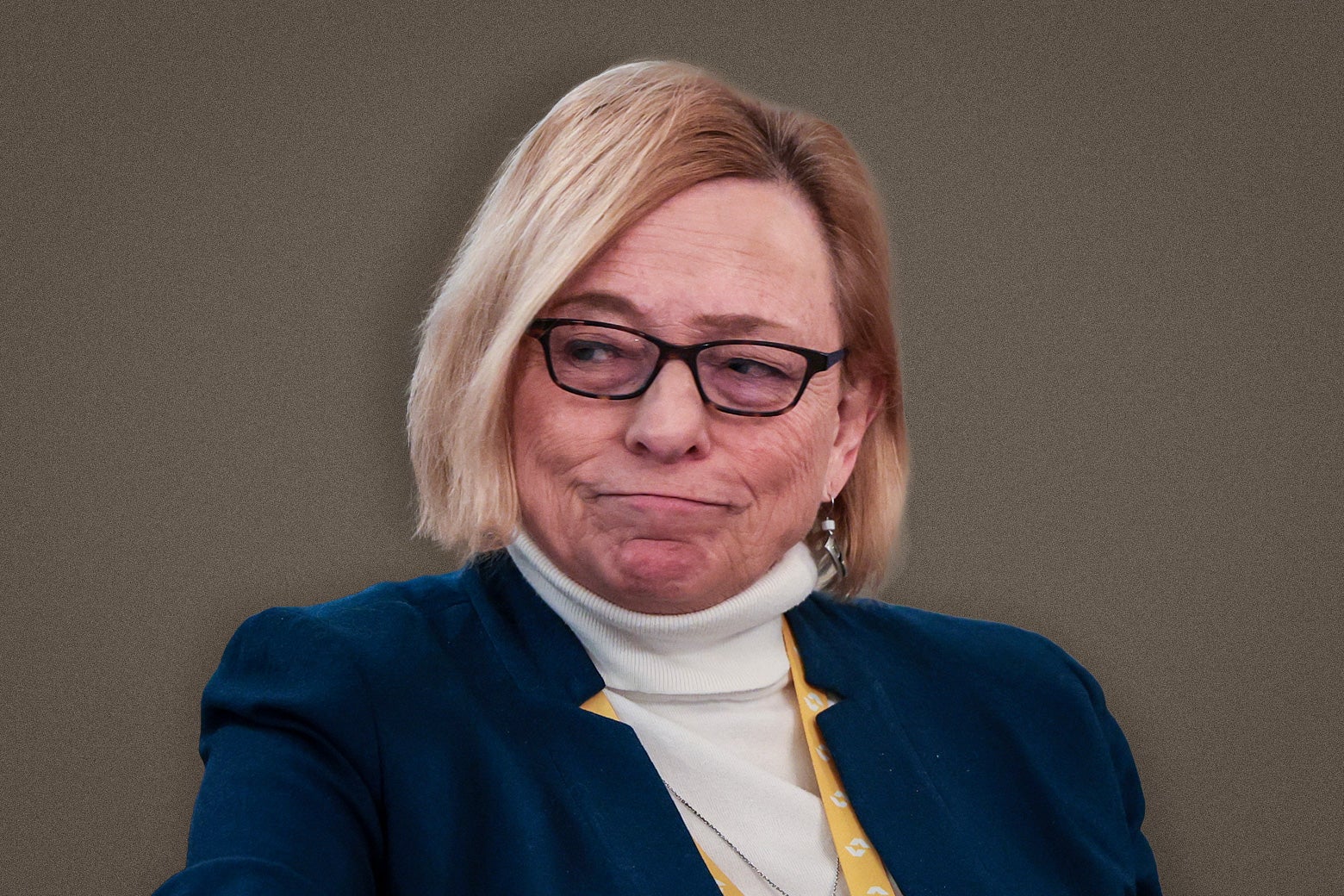As companies all over the U.S. have rushed to advertise their commitment to racial justice and claim common cause with a historic protest movement, we’ve seen a lot of stories like Kelli’s. Her sentiments are representative of the many employees experiencing statement fatigue — a growing level of disinterest, ambivalence, and outright outrage towards companies calling out racial injustice without showing any signs of taking action. And in the current U.S. social climate, employees are becoming more empowered to call out their company’s hypocrisy — juxtaposing solidarity statements with lopsided statistics of company representation and personal accounts of negative workplace experiences.
While many companies are speaking out because they know the costs of silence are high, they’re discovering that the costs of “woke washing” — appropriating the language of social activism into marketing materials, for instance — can be high, too. Organizations such as Whole Foods, Pinterest, and Adidas have all seen public complaints from current and former employees that corporate statements of solidarity glossed over internal inequities. For many workers, such statements from executive leadership underscore how the same leaders who rally for Black lives have fallen short when it comes to addressing these problems. Empty company statements can seem to say that Black lives only matter to big business when there’s profit to be made.
As diversity, equity, and inclusion practitioners, scholars, and consultants, we have first-hand experience navigating these challenges in the workplace. In our work, we investigate acts of discrimination, facilitate workshops on cultural competency and social justice, render institutional policy advice, consult with leaders on diversity issues, and mediate diversity-centered conflict. But more than this, as Black women, we share the professional and personal toll current events are having on communities of color. Accordingly, we recognize the importance of moving beyond solidarity statements and toward power dynamics that effectively eradicate the underlying anti-Blackness that has been central to America’s origin story and thus, the American corporate story.
We’ll tell you right now: While statements of solidarity are a starting point, we are at a critical juncture as a nation and the moment demands more. Diversity and Inclusion efforts, on a collision course with the Black Lives Matter movement, have jointly arrived at the corporate table demanding justice. But how, exactly, can companies show that they’re committed to just change? They can start by 1) prioritizing and assessing corporate accountability, 2) committing to corporate structural evolution, and 3) realigning the power dynamic between the organization and its employees, providing employees more agency to drive company culture. To assist organizations in this time of transition, we’ve put together a blueprint for corporate social justice — a playbook of what executives can do to foster anti-racism at the organizational, leadership, and individual level.
Organizational Accountability: Create a Data-Driven Action Plan
Because many corporate solidarity statements focus on operational change at the organizational level, it’s necessary to first discuss what accountability should look like in the social justice context. When articulating next steps, organizations must consider that this accountability is multifaceted. We draw here from the work of Alnoor Ebrahim, Professor of Management in the Fletcher School of Law and Diplomacy, who focuses on the accountability challenges faced by organizations of various types. Professor Ebrahim provides four tenets that are highly applicable to mapping next steps for organizational accountability:
- Transparency. As companies determine what their social justice course of action should look like, transparency regarding the details and the outcome are essential for winning employee trust. Start by engaging in diligent research to identify how your company’s social justice goals can be met and make these findings available for review. This fact-finding can be achieved via surveys or focus groups conducted among employees, or by partnering with community organizations or consultants to render this insight. This qualitative data will serve as the foundation of a new relationship between the C-suite and employees — a critical dynamic in the push for organizational social justice — and ensure that employee voices, particularly Black employee voices, are heard on the cultural issues impeding organizational social justice. This open process makes room for a more inclusive environment with meaningful data at its core.
- Justification. It’s essential that an action-oriented plan provide clear reasons for why the company is taking the specific next steps it is to advance corporate social justice. This justification should include research-based support for options the organization will pursue, as well as those the organization has declined to explore further. Again, relying on the data here makes this a much easier task.
- Compliance. After an organization has moved from solidarity statements to an action plan, it will be necessary to monitor and evaluate implementation of that plan. While this can be achieved via an oversight committee or task force, it is important to also enact checks and balances to mitigate the effects of bureaucracy on the action plan’s progress. Organizations should build on each of these accountability tenets while moving through the process — transparency and justification should remain hallmarks of the compliance process.
- Enforcement. After rolling out an employee-vetted action plan, organizations must prepare for and respond to areas in which compliance will inevitably miss the mark. Transparency is paramount here, and continued commitment to dialogue — especially in the face of shortfalls — is the key to an ultimate realignment of the power dynamic between employees and the corporation at large. At the conclusion of this process, organizations should emerge with at least two things that will prove infinitely more valuable than an initial statement of solidarity: a data-driven progress report detailing its path toward social justice and a trust-driven employee culture of inclusion.
Concrete and tangible strategies that may result from an employee-vetted action plan include: 1) ensuring manager performance reviews assess whether leaders are cultivating a culture of equity and inclusion, 2) co-creating with and financially supporting community partners on local social justice initiatives, 3) recognizing employee acts of service (Employee Resource Groups, diversity recruitment) in performance evaluations, 4) providing intersectional social justice programming, and 5) mitigating structures that amplify privilege with tools such as blind resumes and skill-based hiring tests, as well as the elimination of salary history questions, low entry-level pay, inadequate benefits, unpaid internships, and educational prerequisites that do not align with job responsibilities.
Accountability in Leadership: Change Starts at the Top
A commitment to corporate structural evolution means that executive leadership must be willing to change the way in which the organization works. This includes looking for diverse faces in non-traditional spaces — in particular, expanding the roles of individuals beyond “Chief Diversity Presence.” However, accountability in leadership must also bring a shift in the balance of power at the top of organizations, and a reframing of the ways that power is wielded.
Black leaders are critical voices in the conversation about the current state of accountability and organizational justice. We asked three experts from our network (and are only using their first names, so they can speak candidly). From their perspectives, organizational accountability in leadership requires these three critical factors:
- Be Intentional About Building Your Pipeline. Dr. Terrence B., Chief Pharmacy Officer at a family health center, suggests that companies “develop relationships with Historically Black Colleges and Universities whose academic departments emphasize majors and skills relevant to that company’s industry.” Once a company has attracted talented Black recruits to its pool, Terrence recommends continuing this intentional commitment to developing Black leadership via internal programs that provide necessary training promising employees.
- Patronize Black businesses and Promote Internal Black Talent.“Externally, [companies] can patronize black businesses and invest in Black entrepreneurs through exposure, acceleration, and contracts,” says Danny A., Vice President of Tech Diversity and Inclusion at a Fortune 500 software company. “Internally, organizations should have people of color on their boards. The progression of Black employees typically gets them to supervisory roles but elevation to senior management is much less likely. It signals to Black employees that ‘you can handle the base operations but I don’t want you in my boardroom.’” Danny notes the role that affinity bias plays in this trend, adding that often, executive leadership decides that “someone who looks like me is someone I think should be in this role.”
- Leverage Your Growing Social Justice Toolkit to Navigate the Future. Kristine M., Global Operations at a major social network, notes that “companies attack areas of social injustice, diversity, and inclusion like a game of whack-a-mole — reactively addressing specific concerns as they come with no lasting impact.” By optimizing the skills and resources discussed here, companies can be better positioned to think proactively in order to drive sustainable change.
Individual Accountability: Build In the Tools of Empowerment
To seed real change, it’s essential to give employees the ability to drive institutional culture. Organizations must be cognizant of the forces accompanying each employee to work, and afford them the space and tools to advance social justice from the bottom up.
- Psychological Safety. Organizations should prioritize the psychological safety of employees. This must include ongoing initiatives such as robust counseling and support options, as well as a corporate willingness to remain open and attuned to the voices, needs, and challenges of employees. Larger companies may foot the bill to train culturally competent counselors, and counselors from a range of backgrounds, on their payroll to address these needs, while smaller organizations may consider drafting memoranda of understanding with community organizations to provide comparable counseling resources
- Advocacy Education: Organizations should provide the educational foundation and tools for employees to learn the skills they need to operate as “Active bystanders” for social justice, or how to engage in inclusive conversations. As with the formulation of a social justice action plan, organizations should review their cultural competency and diversity training curricula, soliciting feedback on what is truly working and what is ineffective. In a time where scholarship, technology, and creativity have produced a spectrum of resources from anti-racism books to apps, there is no limit to an organization’s capacity to create a curriculum with the necessary social justice components.
- Regular Pulse Checks. Organizations should establish systems for regularly gauging the climate of inclusion. This practice may include surveys and follow-up connections with employees who can identify opportunities for improvement. These check-ins should be consistent without becoming so mundane that employees are no longer motivated to participate. Increase engagement by reporting on success and challenges of the social justice goals.
Fostering organizational justice will require a deep institutional commitment at the industrial, executive, and individual level. Organizations must be cognizant of the fact that the current outcry for justice is not ephemeral or confined to social media. It is the culmination of decades of advocacy and centuries of discrimination, and as such, consumers are no longer willing to let organizations squander those efforts.
Consumers not only hold the power of demand but are increasingly demonstrating that they also have a powerful voice in deciding the manner in which companies meet those demands — and organizations need to be mindful of how this dynamic is becoming part of the new normal. By implementing the strategies laid out here, companies advance social justice by re-prioritizing the voices of their employees, while soliciting a partnership for navigating the organization’s future.


















